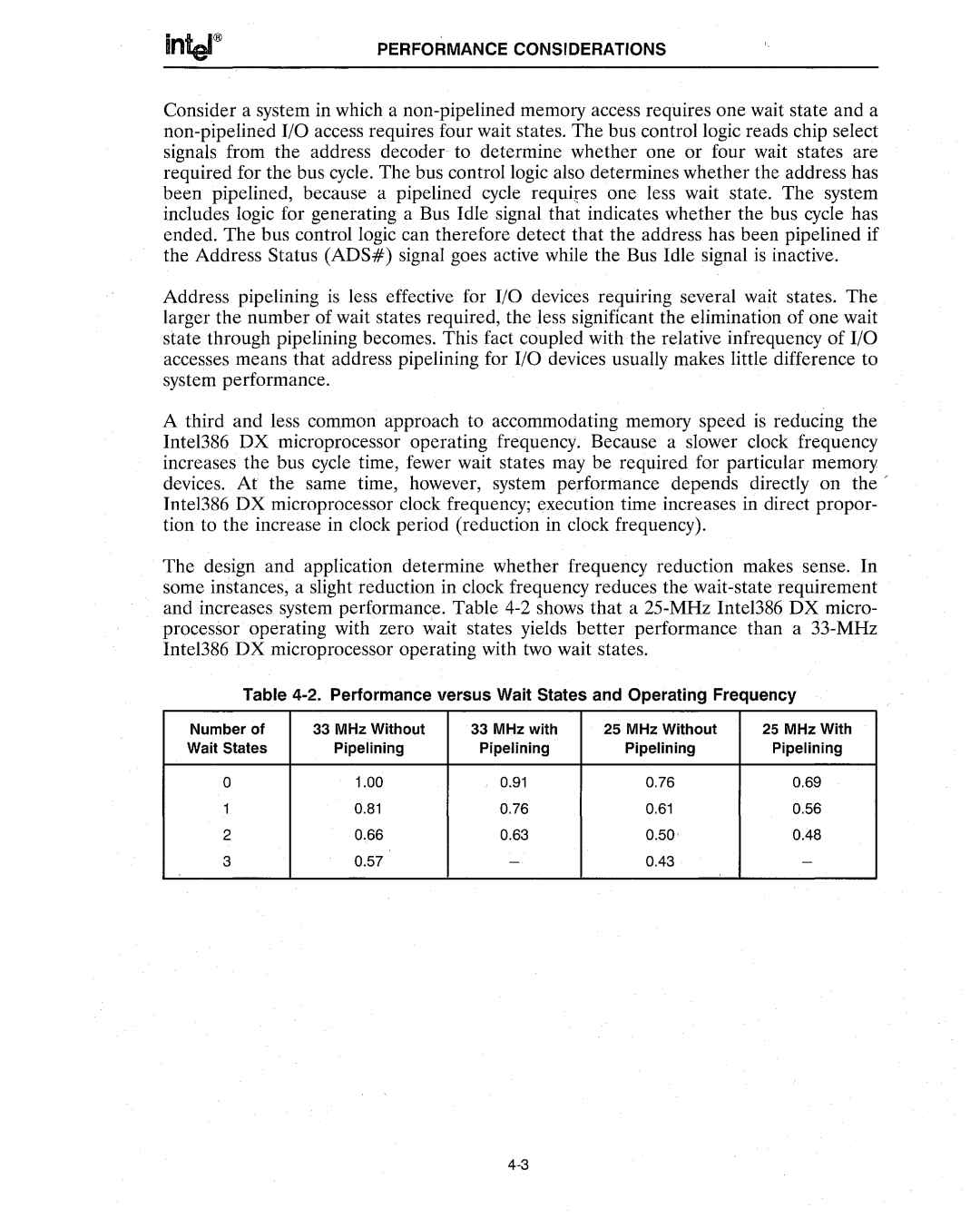
PERFORMANCE CONSIDERATIONS
Consider a system in which a
Address pipelining is less effective for I/O devices requiring several wait states. The larger the number of wait states required, the less significant the elimination of one wait state through pipelining becomes. This fact coupled with the relative infrequency of I/O accesses means that address pipelining for I/O devices usually makes little difference to system performance.
A third and less common approach to accommodating memory speed is reducing the Intel386 DX microprocessor operating frequency. Because a slower clock frequency increases the bus cycle time, fewer wait states may be required for particular memory devices. At the same time, however, system performance depends directly on the' Inte1386 DX microprocessor clock frequency; execution time increases in direct propor- tion to the increase in clock period (reduction in clock frequency).
The design and application determine whether frequency reduction makes sense. In some instances, a slight reduction in clock frequency reduces the
Table 4-2. Performance versus Wait States and Operating Frequency
Number of | 33 MHz Without | 33 MHz with | 25 MHz Without | 25 MHz With |
Wait States | Pipelining | Pipelining | Pipelining | Pipelining |
0 | 1.00 | 0.91 | 0.76 | 0.69 |
1 | 0.81 | 0.76 | 0.61 | 0.56 |
2 | 0.66 | 0.63 | 0.50' | 0.48 |
3 | 0.57 | 0.43 | - |
